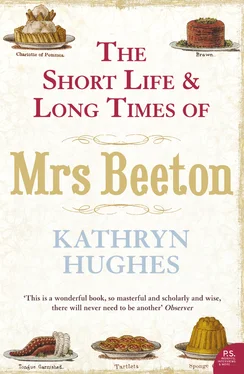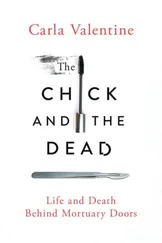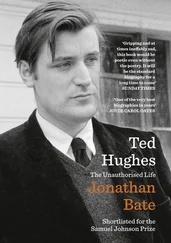We do not know if some of the Grandstand rooms were permanently out of bounds to the children, but certainly Amy Dorling, born in 1859 and still going strong during the Second World War, remembered playing tag around the huge public rooms, which must have echoed strangely to tiny thudding feet and shrill screams. The children might have turned feral were it not for the fact that Henry Dorling now ran his printing business from the Grandstand (yet more evidence of the fudging of interests which so alarmed hostile commentators) and visited almost daily. And then, of course, there was Granny Jerrom, that solid constant in this story who nonetheless left virtually no trace in the formal records. All we have to make her real is a family anecdote, and a recently discovered photograph.
First, the anecdote. Nancy Spain has the old lady sitting tight on top of the box in which the first year’s takings of the Grandstand under Henry Dorling’s regime were stored. In the story, according to Spain, Mrs Jerrom is knitting furiously. The image neatly sums up the qualities of a whole generation of pre-Victorian women. Money is crucial, far from vulgar, but needs to be watched carefully if it is not to disappear into thin air. There is no shame in guarding it with your life, or at least with your sturdy body weight. But knitting is important too. This is not the fancy needlework that will come to define a whole new generation of young ‘genteel’ middle-class women, certainly not the royal coat of arms executed a few years later by her granddaughters ‘the Misses Dorling’. Instead, Mrs Jerrom is engaged in a serviceable craft that will clothe a family, save expenditure, and eke out an income. And, what is more, there is no shame to be seen doing it.
Then there is the photograph, lately discovered among a box of prints probably taken by James Collinson, an original member of the pre-Raphaelite Brotherhood and one-time fiancé of Christina Rossetti. From 1859, and now living in Epsom, Collinson was experimenting with photography as a way of producing preliminary ‘sketches’ for his narrative paintings. And since he was far from flush, Collinson was happy to double up as a portrait photographer. During the 1860s every worthy burgher and his lady seem to have passed through Mr Collinson’s studio in their best bib and tucker, ready to be captured for posterity by this promising new process. In among Epsom’s finest commercial and even gentry families (the nobs, naturally, have made other arrangements) you can see Thomas Furniss who ran a tailoring business and was also parish clerk, Dr Thomas John Graham who was said to be the model for Dr John in Charlotte Brontë’s Villette , and the Keeling family who were the town’s chief chemists and druggists. There too is a picture of 68-year-old Mrs Jerrom, probably taken in 1862, wearing a solid black dress and white cap, the standard garb of a widow. Her mouth is slightly ajar, as if surprised by the flash of Mr Collinson’s magic box. She is a neat, serviceable little woman. Perhaps because she only had two pregnancies to Elizabeth’s seventeen she has kept her figure in a way that her dropsical daughter never managed.
Mrs Jerrom’s image is in sharp contrast with that of three of her grandchildren, who were photographed during the same session: Bessie and Esther Mayson and Amy Dorling. Both the Mayson girls are fashionably dressed, smooth-haired, and look straight into the camera with the confidence of eligible young women who have no worries about the old-maidism that lies ahead (they are only 24 and 21 and, while Bessie is probably the prettiest, Esther has that striking auburn hair and slender figure that people will still be noticing when she is in her eighties). The other granddaughter photographed is Amy Dorling, who at 3 years old is a spoiled lolling brat with ringlets and a challenging look, as if she knows she is a rich man’s daughter entitled to anything she wants, including the photographer’s patience. The Mayson girls and Amy, although divided by twenty years, are both of a generation that understands the camera’s eye and can meet it on its own terms. Mrs Jerrom, by contrast, looks suspiciously over the shoulder of the photographer and into the distance, to a time before a machine could capture your soul.
Isabella Mayson’s education was patchy, but no more so than virtually every other girl of her class and time. She was sent for a while to a school in Islington, chosen more for its familiarity and convenience than anything else, since it was directly opposite 14 Duncan Terrace where Elizabeth Mayson and her little brood were living just prior to their move to Epsom. Until 1844 1 Colebrooke Row had housed a boys’ school, but in that year it started to cater for girls under the watchful eyes of Miss Lucy and Miss Mary Richardson. Five years later the school was taken over by two sisters from Hackney, with the delightfully Austenish names of Sarah and Fanny Woodhouse. The 1851 census shows them with five pupils, four of whom were either Maysons (Bessie and Esther) or Dorlings (Mary and Charlotte).
If this sounds cottagey and amateurish, it is only a fair measure of how small private boarding schools operated during the early Victorian period. Quite unlike the public and high schools of a later date, these little commercial enterprises, headed by a clergyman or a couple of spinster sisters, were flighty affairs, quite capable of closing down or changing hands at a moment’s notice when, say, a particular family decided to withdraw its patronage. The quality of the education the pupils received varied wildly, dependent entirely on the skills and abilities of the person who happened to be in charge at any moment. At 1 Colebrooke Row it is most likely that Isabella was taught to read and write, sew and perhaps speak a little French. She almost certainly learned to draw and paint, since the Misses Richardson’s brother, a portrait painter, ran his studio from the same address. The fact that Isabella’s younger sisters, stepsister, and half-sister were sent to the same establishment – though under different management – suggests that the Dorlings, who knew a good bargain when they saw one, thought that they were getting value for money.
However, to their credit, the Dorlings wanted more than a just-so education for their girls. ‘Boarding school misses’ were becoming an increasingly visible – and mockable – part of the social landscape. Social commentators saw them as part of that whole process whereby the rising commercial middle classes were trying to turn their girls into what they fondly imagined were ladies. Farmers, always the particular butt of critics’ complaints, were said to be sending their daughters to pretentious boarding schools for a year or two where they picked up a little French and piano and felt themselves, once home, too grand to help with the domestic chores. The accusation could be extended to include every chief clerk, wealthy grocer, and small-time solicitor who was now busy trying to scramble up the social ladder by turning his daughters into something very different from their mothers. Instead of moulding gracious and accomplished ladies, so the argument ran, these cheap boarding schools were churning out silly girls with ideas above their stations. It was a stereotype that a young publisher and editor called Samuel Beeton was, at this very moment, spoofing in his new magazine the Englishwoman’s Domestic Magazine ( EDM ):
the young lady’s peculiar talents consisted in dress and fancy-work, with some interludes of novel-reading and playing fantasias on the piano (in company), and, as we were forced to admit on seeing her with some of her particular friends, in a great faculty of talking and laughing about nothing.
The Dorlings wanted something better for their girls, and they decided to send them abroad to school in Heidelberg, the small historic town in southwest Germany. In no way a ‘finishing school’ (the concept had no purchase in Germany), the Heidels’ establishment had started as a day school in the late 1830s, providing a rigorous syllabus for the daughters of well-to-do local people. However by 1850 the 40-year-old headmistress Miss Auguste Heidel was actively seeking British girls as boarders for her school, which occupied a series of premises in the picturesque heart of the city. Every year, in late spring, Miss Heidel visited London, took rooms in the City and invited prospective parents to deposit their daughters with her for immediate passage to Germany. These invitations took the form of announcements in The Times and the Athenaeum :
Читать дальше












